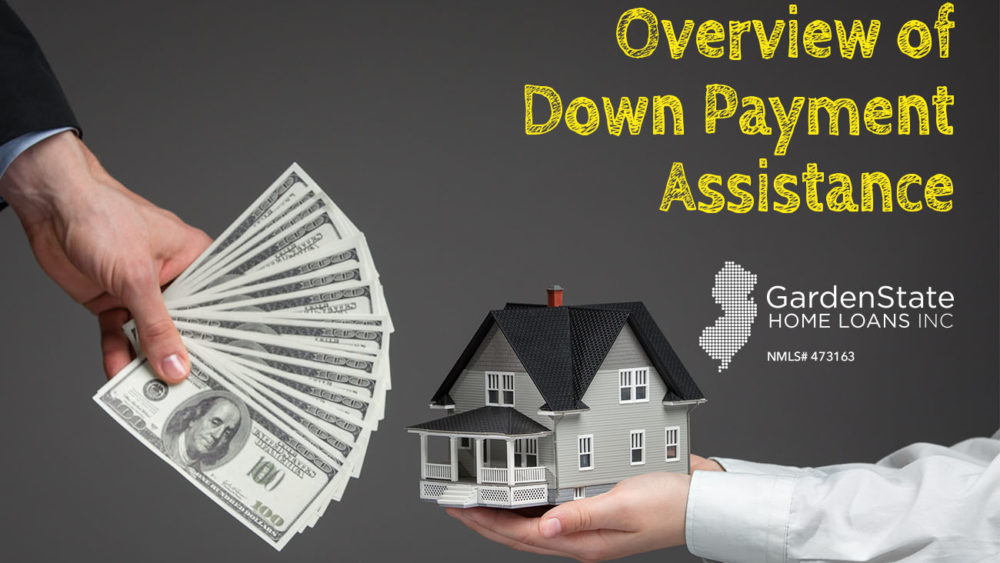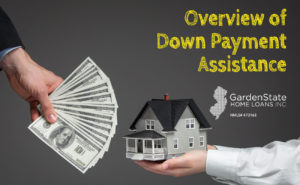Several first-time home buyers struggle with a down payment when looking to purchase a home. It’s not easy for everyone to save up 20% of a home’s sale price. This can leave home buyers dreaming of owning a home instead of holding the keys in their hands.
Fortunately, those dreams can come true with the help of down payment assistance programs. Across the country, there are more than 2,400 home buyer programs available. These programs offer assistance to homebuyers to make their dreams a reality. It’s good to know your down payments options, so let’s break down the basics of these programs.
What are down payment assistance programs?
Down payment assistance programs help buyers with low-to-moderate income make down payments on their homes. These programs are helpful to home buyers as they aim to lower the monthly mortgage payment after the contract is signed. The larger the down payment, the smaller the monthly mortgage payment will be moving forward. Depending on how the assistance program is structured, these programs can help build more equity in your home on day one. They can also help pay for closing costs and limited property repairs.
How Down Payment Assistance Programs Work
There are three main types of down payment assistance programs that all provide grants, but can be structured in different ways. Before anything, home buyers should carefully research their down payment assistance program to fully understand the guidelines. In addition, be completely aware of any financial obligations the grant may consist of, such as repaying it.
The Three Main Types of Grants:
1. True Down Payment Grants
With this grant, homebuyers are not required to repay the grant at any time throughout their home ownership of the property. True down payment grants have no financial obligations or conditions that require repayment of the grant. Although this is a true gift, these grants are typically a smaller amount – up to 3% of the home purchase price.
2. Conditional Down Payment Grants
Conditional down payment grants are usually forgiven, meaning the home buyer doesn’t need to repay it. Of course, there are some guidelines to this, including living in the home for a specific amount of time (usually a five-year minimum). If the recipient sells or refinances during the first five years of homeownership, they’ll end up having to repay the grant on a prorated basis. Even though they’re subject to size limits, conditional down payment grants typical range between 5%-10% of the purchase price.
3. Subordinated or Silent Second Down Payment Grants
This grant accrues interests. It requires repayment in full once the new owner’s sell the home or when the homeowners vacate, payoff, or refinance the home. With this grant type, it doesn’t matter how long the homeowner lives on the property. The grant is referred to as a “silent second” due to its similar structure to a second mortgage. This down payment grant is deferred, meaning the repayment schedule isn’t triggered until a transaction takes place, such as selling the home. These deferred payments help keep the monthly mortgage affordable.
Eligibility for Down Payment Assistance
Each program eligibility varies by city, state and program provider. Potential recipients should contact their local housing agency, lender or commission to determine whether or not they qualify for the down payment assistance grant.
Borrower Qualification & Requirements
Like any grant, borrowers must meet certain qualification requirements. For a down payment assistance program, borrowers must meet credit score and financial minimums or limitations. Program requirements are often flexible when it comes to credit scores and DTI ratios.
Property Eligibility
Properties are usually required to be single-family homes. Typically, condos and apartments are not eligible, but there are some programs that do offer down payment assistance for these property types. Purchase prices may depend on the location but most programs have a purchase limit on eligible homes.
Income and Asset Limits
The gross income of the borrower must be below the program’s household income limit, which is usually the percentage of the area’s median income. The income limit can fluctuate depending on the number of people in the household. In contrast, some programs don’t base their limit on the area’s median income.
In addition to income, some programs require you to have a minimum number of assets in the bank. These assets cannot exceed the maximum or fall below the minimum threshold set forth by the program provider.
Home Buyer Counseling Class
Generally, these programs require individuals to complete a HUD approved homebuyer counseling course. It aims to help borrowers to have a full understanding mortgages and how they work, along with the commitment.
Impound Account
These programs require homebuyers to pay property taxes, homeowner’s insurance, and mortgage insurance, combined into an impound account. This account is a trust account controlled by the lender and is used to pay for third-party expenses such as taxes and insurance.
Who Offers Down Payment Assistance Programs?
- State Housing Finance Agencies (HFA)
- Cities and Counties
- Non-profits
- Employers
- HUD-approved state and local housing agencies
- Commissions



Comments are closed.